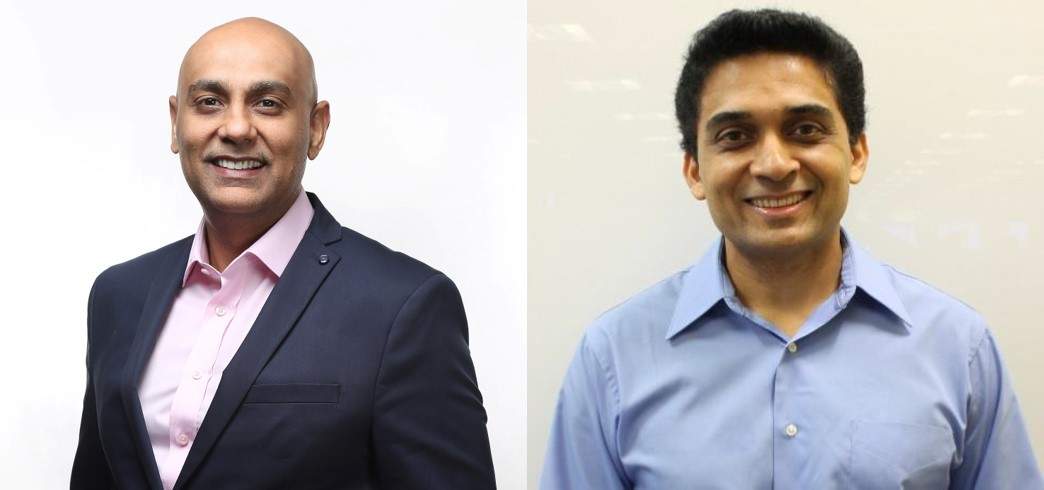 In an interview with ETtech, Anupam Pahuja, MD and Guru Bhat, GM Technology & Head of Engineering, PayPal India talk about their India operations, PayPal Mafia, their fight to make digital payments more secure and many more. Edited Excerpts
In an interview with ETtech, Anupam Pahuja, MD and Guru Bhat, GM Technology & Head of Engineering, PayPal India talk about their India operations, PayPal Mafia, their fight to make digital payments more secure and many more. Edited ExcerptsPayPal mafia has had a long list of illustrious folks who left PayPal and built great tech companies. So Guru what happens to the entrepreneur inside of you?
This was one of the factors that led me to join PayPal considering the legacy they have left.
We would like to see more entrepreneurs add to the PayPal Mafia who get their starts here and make a mark in the world like Peter Thiel, Elon Musk, or Max Levchin, has.
I know many in the India centres who are like these folks with an innovative zeal. What I do hope is unlike Musk or Thiel, we can retain these folks forever.
How has PayPal’s India presence evolved over time?
Anupam Pahuja: Until a few years ago, acceptance for PayPal was predominantly by the urban Indian merchants and freelancers, but the growth of the internet and more specifically the Digital Indian policy of the Prime Minister, internet on mobile have helped Indians unlock the true potential of PayPal.
A handicrafts maker in the hinterland, can log on to the internet, sell in a global marketplace and process payments through PayPal which has a network of 192 million customers accounts across more than 200 markets. To ease the process our offerings like Seller Protection through which PayPal guarantees payments to merchants on successful delivery of goods and services are added advantages.
The demonetization of currency by the Honourable Prime Minister was a welcome move to increase acceptance of digital payments and pave the way for a less-cash economy. We are working extensively with merchants who touch the lifecycle of a foreign tourist to help them transact in a seamless manner and keep the Incredible India vision alive.
Guru Bhat: We have about of 192 million customers in more than 200 markets across the world but there is no domestic product in India. We do have cross border products wherein merchants from India can attack any of these 188 million customers from around the world.
Also in terms of tech centres, outside of San Jose, our biggest tech workforce is in India. The combined strength between Bangalore and Chennai is roughly 1300 employees. The engineers contribute to the risk aspect that we were talking about, core infra in terms of cloud, merchant and consumer products, big data analytics.
How does PayPal look at cyber security?
The bad actors have existed since time immemorial. Initially, there were several fraudulent transactions and sing ups. But then we pioneered the Captcha mechanism. The team coded it in the matter of few hours. They detected that something that humans are good at that is optical character recognition that computers are not good at.
But over the years, we realized that just putting restrictions were not enough for authentication. That’s why we built the Risk Engine. For the same, we aggregate data from various sources. We are constantly monitoring various aspects to which we are able to put out picture of the user where the person is, his location of transaction initiation, the history of their interactions.
So we reduce the fraudulent transactions through smart risk modelling. All this data is fed back into the system so that risk engine can learn from its correct and wrong decisions. It is evolving over the time.
Our loss rate on our transactions is less than one third of one percent globally across all our business. We need to lower it more with machine learning and big data analysis.
But what steps have you taken to tackle selling of PayPal data on the dark net?
We have been doing tokenization for a long time now for the same. Instead of investing time in encryption and setting up all systems along the value chain to understand encryption and decryption, we just found a different alias for the credit card number.
It looks exactly like the same number and on the other end when it has to be de tokenized safe and secure vault is consulted to get the de-tokenization done and tokenization is valid only for one transaction for a certain period of time.
For example, a single person opens more than 10 PayPal accounts and then associates it with one bank account number. But all these are monitored by our risk engine at an account level. We look at shipping, returns behaviour, addresses to which it is being shipped or is this merchant getting bad feedback from customers or IP addresses where the account has been operated.
Globally, what does PayPal need to do in order to take on rivals like Alipay, Apple Pay or Samsung Pay?
Our competition is not mainly against other Fintech companies but is against cash around the world in developing countries. The factor of trust and confidence in the system is very low. Their inherent ability to absorb inconvenience is high especially in a market like India.
We want to play a big role in the digital payments space in India. We want to democratize access to the financial system through our products. There will come a day when cash will be an outdated concept and we feel we are best positioned to attack all pieces of the pipe.


0 comments:
Post a Comment